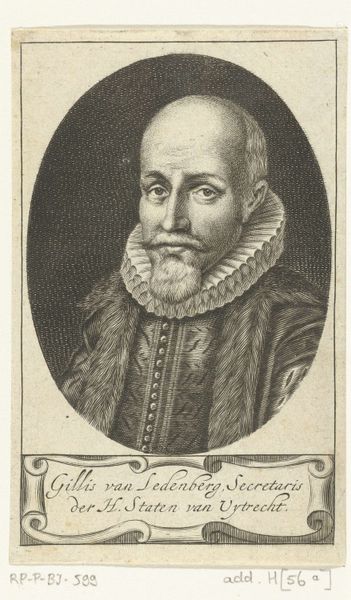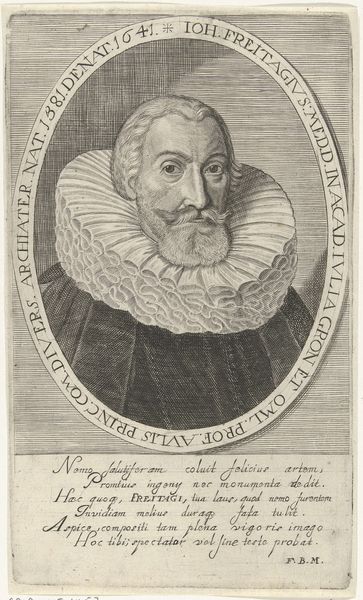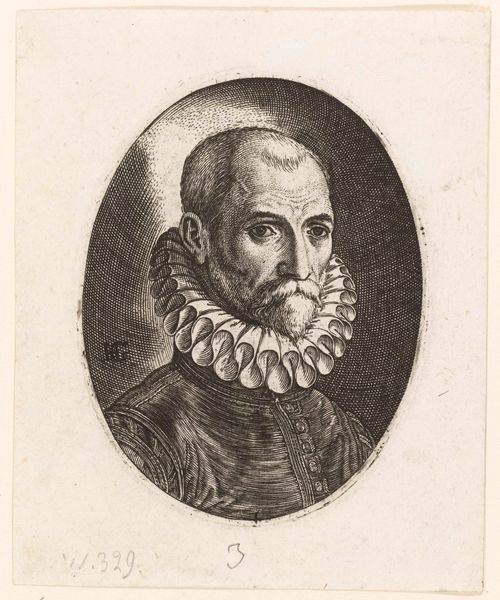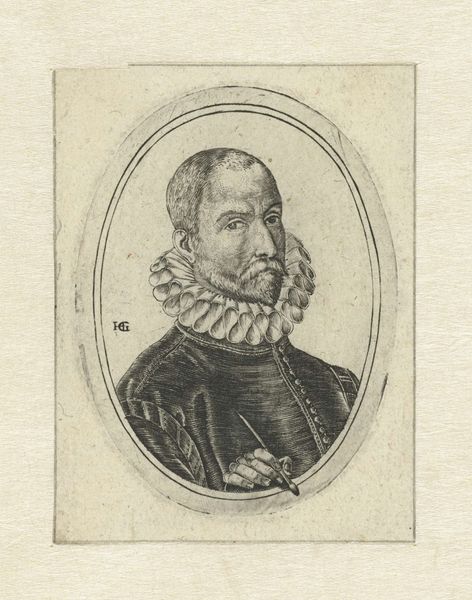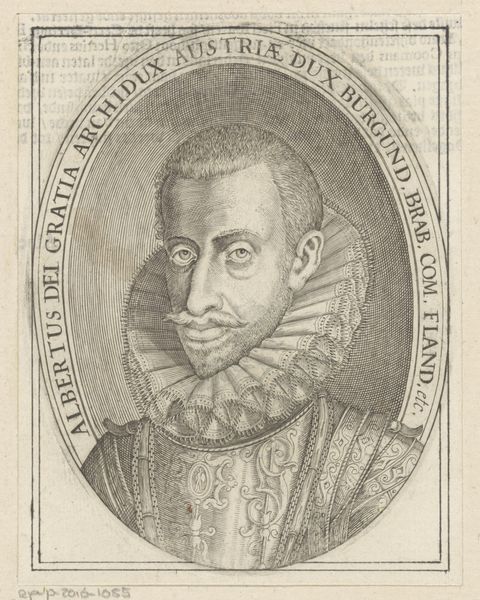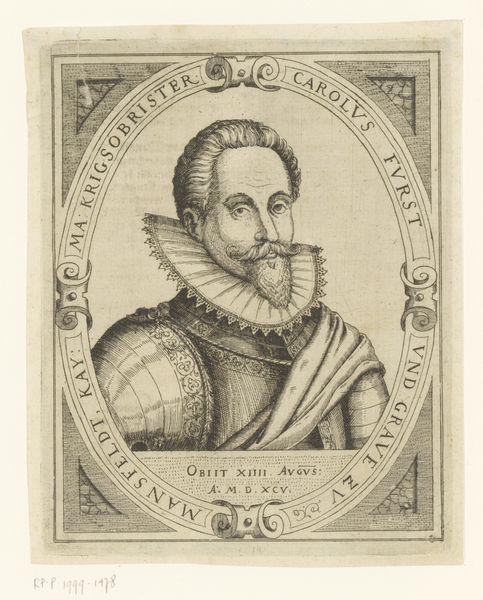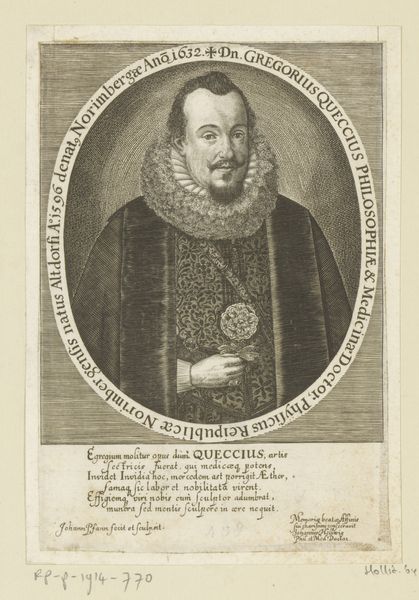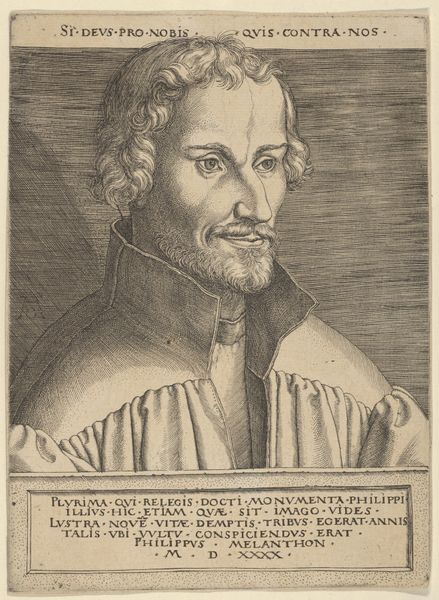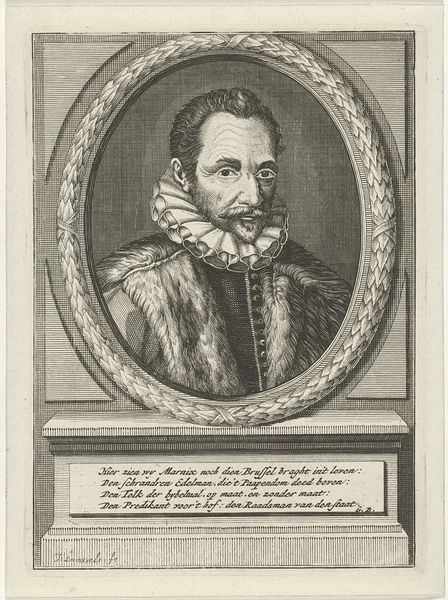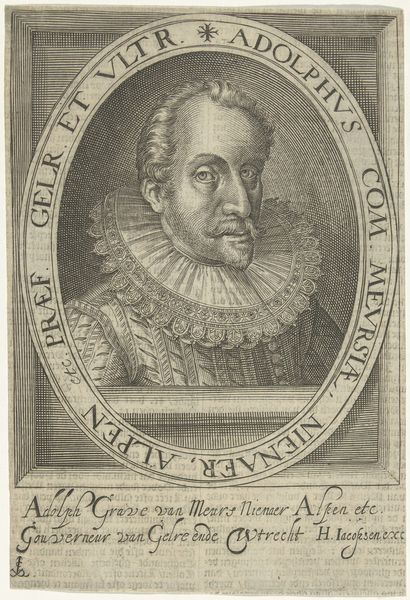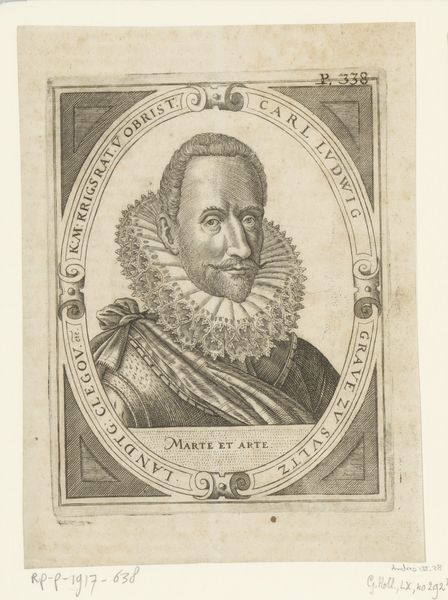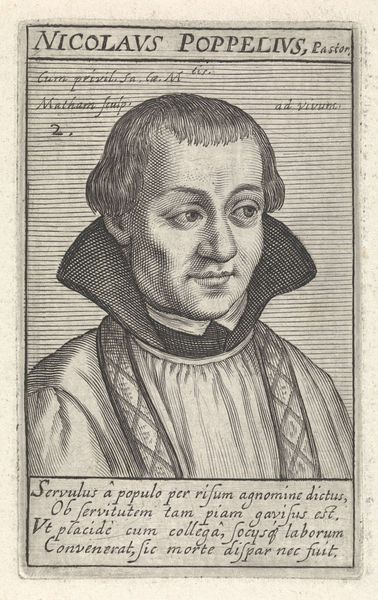
print, paper, engraving
#
portrait
#
baroque
# print
#
old engraving style
#
paper
#
engraving
Dimensions: height 188 mm, width 118 mm
Copyright: Rijks Museum: Open Domain
Curator: Look closely at "Portret van Janus Gruterus" from 1628, an engraving on paper by Jacob van der Heyden. Editor: Immediately striking is the incredible detail rendered in such a monochrome medium. The figure almost seems to emerge from the stark background, the etched lines creating an engaging depth of character. Curator: Indeed. Van der Heyden uses line and hatching to great effect, creating texture not only in Gruterus's beard and the ruff, but also evoking light on his face and the sheen on his doublet. Note also the inclusion of text above and below the portrait. Editor: Those lines are interesting. Given that this is a portrait of Janus Gruterus, a well-known scholar and librarian, perhaps those textual elements are to emphasize his erudition, the framing devices adding further prestige and importance to the image. It does seem rather baroque. Curator: Exactly. The ruff and doublet, those material signs of status, indicate the wealth and position Gruterus held, fitting into the broader trends of Baroque portraiture and its concern with capturing likeness but also portraying social standing and accomplishments. The controlled and tight graphic expression aligns well with this. Editor: The fact that it is a print also suggests wider accessibility. The choice of the engraving medium likely helped in the dissemination of his image and legacy. Prints, after all, often served a public function. I also read this one served a commemorative function, executed a year after the subject died. Curator: A significant point. Its status as an object, mass-produced but possessing significant intricacy of design, is really thought provoking. Consider the detail that draws the eye, encouraging sustained viewing and, thus, greater appreciation of its aesthetic and memorial functions. The composition subtly pushes Gruterus forward, literally pulling his likeness into our space. Editor: Reflecting on it, this piece illustrates the way visual texture and carefully constructed details come together in early portraiture, transforming both subject and viewer. Curator: Absolutely, this portrait underscores not only Gruterus' personal image but the larger social structures of knowledge and artistic expression during his time.
Comments
No comments
Be the first to comment and join the conversation on the ultimate creative platform.

